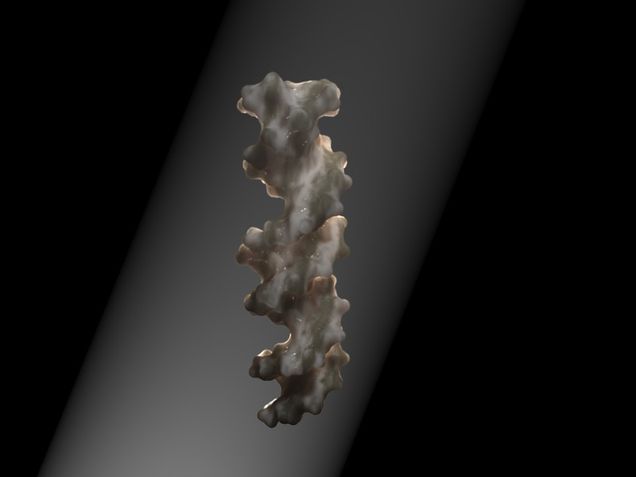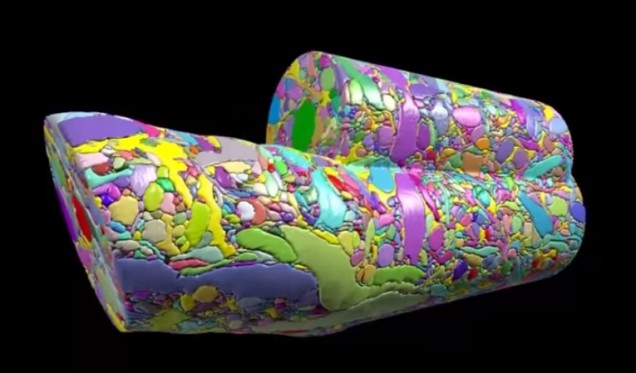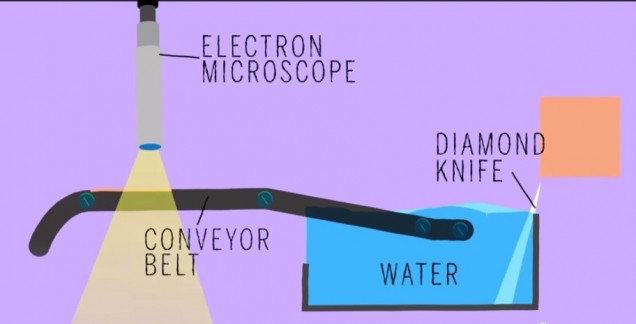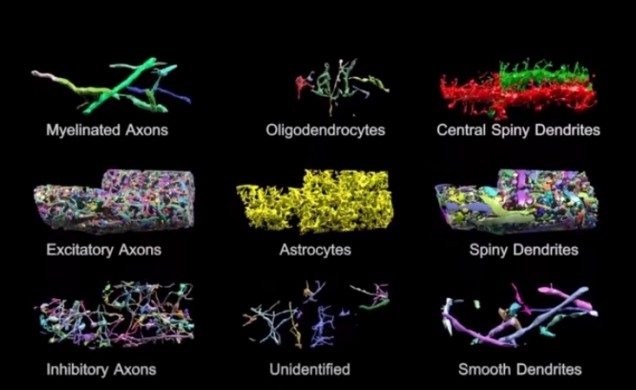Category: News
How Dreams Are Shown Through Brain Activity
For the longest amount of time, sleep and dreams were a complete mystery. At best, only educated guesses could be made as to how and why we dream from scientists such as Sigmund Freud, who claimed that sleep was a “safety valve” for unconscious desires. Essentially, no concrete theory for the process of sleep could be made because scientists lacked the means of actually accessing the brain. In the 1950s, however, scientists made a breakthrough in the study of sleep when they discovered its various stages.
In 1953, researchers using electroencephalography (EEG) were able to measure human brain waves during sleep. In addition, they measured the movements of the limbs and eyes. From the results of these experiments, researchers were able to find that brain activity both increases and decreases during sleep. During the first hour of sleep, brain waves slow down, and the eyes and muscles relax. Heart rate, blood pressure, and temperature fall as well. Over the next half hour, however, brain activity drastically increases from slow wave sleep to rapid eye movement (REM) sleep, and brain waves observed during REM are similar to those observed during waking. As opposed to waking, however, atonia occurs, which is when the body’s muscles are paralyzed; the muscles that allow breathing and control eye movements are fully active, and heart rate, blood pressure, and body temperature increase. As sleep continues, the brain alternates between periods of slow wave sleep (divided into four stages, with brain activity increasing with each stage) and brief periods of REM sleep, with the slow wave sleep becoming less deep and the REM periods more prolonged until waking occurs. Approximately 20 percent of our total sleep is spent in REM sleep.
While dreams can occur during slow wave sleep, if one is awakened during its several stages, one will most likely recall only fragmented thoughts. Instead, most active dreaming occurs during REM sleep, when the brain is most active. During REM sleep, signals from the pons travel to the thalamus, which relays them to the cerebral cortex, the outer layer of the brain, and stimulate its regions that are responsible for learning, thinking, and organizing information (the pons also sends signals that shut off neurons in the spinal cord, causing atonia). As the cortex is the part of the brain that interprets and organizes information from the environment during consciousness, some scientists believe dreams are the cerebral cortex’s attempt to “find meaning in the random signals that it receives during REM sleep.” Essentially, the cortex may be trying to interpret these random signals, “creating a story out of fragmented brain activity.”
~ Nathaniel Meshberg
Sources:
http://www.ninds.nih.gov/disorders/brain_basics/understanding_sleep.htm#dreaming
http://www.brainfacts.org/sensing-thinking-behaving/sleep/articles/2012/brain-activity-during-sleep
One Step Closer: New Alzheimer’s Gene Discovered
Alzheimer’s Disease (AD) is the most prevalent form of dementia, and sixth leading cause of death in the US, affecting 60-80% of individuals 65 and older. The hallmark symptom of Alzheimer’s Disease is serious memory loss attributed to widespread cell death and loss of cortical mass. Treatments are currently used to stop and slow the progression of the disease, and improve patients’ quality of life as there is no cure for AD.
The molecular basis of neurodegeneration in Alzheimer’s Disease is in amyloid beta plaque formation and the accumulation of neurofilaments. Studies have shown that aggregates of -amyloid form amyloid plaques that are predominantly found in the brains of Alzheimer’s patients. The accumulation of amyloid plaques in the brain impairs neuronal function and leads the eventual death of cells.
Recently, researchers have pinpointed a gene involved with the immune system, IL1RAP, that increases the risk of developing AD. In a genome-wide analysis of over 500 individuals, those with the IL1RAP variant were found to have a greater accumulation of amyloid plaque over a two year period - independent of the previously highly speculated AD-linked allele APOE ε4.
IL1RAP, or Interleukin-1 receptor accessory protein, is associated with the immune system, and often regulates microglial activity (“the brain’s ‘garbage disposal system’.”) Studies have shown that microglial cells gather around plaques and clear amyloid deposits. The presence of IL1RAP displays altered microglial activity, featuring faster accumulation of amyloid plaque, increased cognitive decline, and increased cortical decline. Focusing on the IL1RAP pathway may be imperative in inducing plaque destruction, therefore halting the progression of Alzheimer’s Disease. Researching this pathway may be key in eventually creating a cure.
-Kavya Raghunathan
Sources
(Original Study) GWAS of longitudinal amyloid accumulation on 18F-florbetapir PET in Alzheimer’s disease implicates microglial activation gene IL1RAP- http://brain.oxfordjournals.org/content/138/10/3076
New Gene Linked to Amyloid Plaque Buildup in Alzheimer’s Disease Identified- http://neurosciencenews.com/il1rap-alzheimers-apoee4-genetics-2826/
New Alzheimer’s Gene Identified- http://www.medscape.com/viewarticle/852556
What Is Alzheimer’s?- http://www.alz.org/alzheimers_disease_what_is_alzheimers.asp
Image by user Freesci via Wikimedia Commons
What Really Happens When You Tickle Babies

Everyone loves to make babies laugh, whether it's by making funny faces, strange sounds, or tickling their toes. The funny thing is, while we know that younger infants start out with very limited visual capabilities, most of us have assumed that their sense of touch is developed enough to be linked with the visual system. A recent study shows that this is not the case.
Imagine you're in a room, maybe a few other people, you're just chilling there, sitting in a nice comfy chair, trying to take in your surroundings when all of a sudden, you feel a tickling sensation on your foot. But the weird thing is, it doesn't seem like any of your friends came over and tickled your foot. This would be a pretty strange situation, feeling this apparently source-less, isolated tickle. This is what happens with babies.
It seems as though infants live in a world where the only thing they register about touches on the body, is that they occur on the body. In fact, infants are much more talented than we are at identifying where on the body a touch occurs. For some reason, when an adult crosses their arms or legs, it becomes a lot harder for them to correctly identify the source of the touch. Infants are a lot more accurate when it comes to locating the source of the touch, which in an experiment they showed by moving the foot the experimenter touched. However, this heightened ability goes away at about six months.
What makes this interesting is that it shows us infants have an increased ability to localize a touch on their bodies that fades after only a few months. This could be a critical period for somatosensory development in infants or an evolutionary adaptation that was probably more useful many generations ago.
Moving away from the realm of speculation, what is definite is that babies cannot associate the person touching them with the touch itself. This may be disappointing for families to hear, or at least for those that believe their babies have a special affinity for their touch. As heartbreaking as it might be, unfortunately they don't, and any baby's response to the touch of a person is most likely due to their personal interpretation of the touch or natural instincts.
While this study depressingly reveals that babies aren't really all the emotionally attached to us when it comes to their physical sensations, it does give us more insight into how the sense of touch develops during the early years.
http://www.sciencedirect.com/science/article/pii/S0960982215010714
http://neurosciencenews.com/infants-tickle-sensory-neuroscience-2909/
Is Music Affecting Our Memory?
 Music has been scientifically proven as beneficial, having effects such as reducing stress, enhancing blood vessel function, improving sleep quality, and improving cognitive performance. However, one thing that music does not improve is one’s ability to focus. In a recent study conducted at Georgia Institute of Technology, researchers found that listening to music decreased the efficiency of remembering names.
Music has been scientifically proven as beneficial, having effects such as reducing stress, enhancing blood vessel function, improving sleep quality, and improving cognitive performance. However, one thing that music does not improve is one’s ability to focus. In a recent study conducted at Georgia Institute of Technology, researchers found that listening to music decreased the efficiency of remembering names.
Participants in this study were asked to match faces to names, a task that involves associative memory. In associative memory, a memory of an event or place is triggered by the recollection of something associated with it. Music is heavily involved in associative memory, which is why it can be upsetting to listen to certain songs if you have associated them with an ex-significant other. Much like other types of memory, associative memories are processed in the hippocampus of the brain.
Some participants completed this name-face test in silence, while others had non-lyrical music playing in the background. All age groups of participants agreed that the music was distracting from the test, but only the scores of the older adults were affected by it.
Nanotechnology: Creating the perfect human?

How would you feel if you had the choice of having billions of tiny robots injected into your body? A pretty unpleasant thought, am I right? What if I told you that these tiny robots could repair any mutation you may have in your DNA? Sound far-fetched? Well, scientists have been making huge breakthroughs in this! It's called nanotechnology. These small robots are like tiny computers that are coded to attach to specific cells in your body and carry them from point A to point B. These tiny robots, 1-100nm in size (or 1 and 100 billionth of a meter!), are like transporters; they pick up the target cell at point A and move it to point B. Point B can be anything from the trash, (cell death) if the cell is not needed anymore, to another part of the body where the cell is needed. They also have the ability to reprogram a cell's biology. If more of one cell is needed in a particular area it can bring that cell to the specified area and "tell" it to replicate. Basically, nanotechnology will eventually perfect every single cell in your body.
The Mystery of the Human Connectome
Did anyone read that article in BU today last week called “Untangling the Connectome?” In case you didn’t, here’s a brief synopsis. Dr. Kasthuri and his lab members are working on identifying the connections between the neurons in the human brain. This has been done before for C. elegans, which have only 302 neurons (compared to our 100 trillion). So, imagine how complex this project is and how much data is contained in one tiny slice of human brain?! In the article, Kasthuri said that a brain slice with the volume of “a millimeter cubed, at the resolution we would like, is about two million gigabytes of data” [1].That’s crazy. The Kasthuri lab implemented a clever method (Figure 1) to take images of 30 nm brain slices that provide the high resolution pictures they’re looking for.
Basically, the brain volume is immersed in plastic and cut with a diamond knife to ensure precision. Since the slices are somewhat floppy, they are collected in water then picked up by a conveyor belt. While on the conveyor belt, an electron microscope takes a quick shot of the brain tissue and next a collection of images is put together to create a accurate image of the initial brain volume. Methods can be used to break down the image of the brain volume into components such as axons, dendrites, etc. (Figure 2). Pretty cool, right? The implications of this research is that understanding the connections in our brain can teach us about brain development and memory functions.
The Human Connectome project at Mass General Hospital (MGH) is working on developing high resolution neuroimaging methods. They’re working on figuring out how varying white matter fiber connectivity correlates to brain function and how cytoarchitectonics (the pattern of neuron organization/density in different areas of the brain, used to decipher Brodmann’s areas in the brain) can influence brain connectivity [2]. Methods they’re using include diffusion spectrum imaging (DSI), which is similar to diffusion tensor imaging (DTI) as both allow scientists to observe white matter connectivity since water diffuses parallel to white matter tracts. DTI measures the preferred and mean direction of the diffusion of water while DSI measures it in many different directions [3]. Scientists at MGH are also working on developing tools for high angular diffusion imaging (HARDI), which “address[es] the challenge of imaging crossing fibers by applying a stronger magnetic gradient for a longer time and capturing many more images of diffusion in various directions” [3].
Researchers are hoping to find patterns of connectivity by deciphering how our 100 trillion neurons are linked. This information could help scientists better understand the roots of different neurological or neurodegenerative diseases where perhaps neural connectivity differs significantly. This is a challenging project but the results of it could be a major breakthrough for neuroscience.
~ Srijesa K.
Sources:
[1] "Untangling the Connectome"
[3] "White's the Matter: A basic guide to white matter imaging using diffusion MRI"
An Understanding of Language-Processing with Audiobooks
When I read a book such as the one about the romantic life of Peeta and Katniss, I delve into the lives of the characters so much that I worry about myself because I relate myself to the characters' fantastical lives. All readers face this and that is incredible. Neuroscientists like Roel Willems and Annabel Nijhof would completely agree. In fact, they recently published a study revealing the neurological effects of listening to audiobooks.
In the experiment, researchers had the subjects listen to chapters of several different audiobooks and recorded their neurological responses using functional Magnetic Resonance Imaging (fMRI). According to the results, the subjects focused mostly on either the actions of characters or the feelings and intentions of the characters. In the subjects that reported to prefer empathizing with the characters more, the fMRIs showed heightened activity in the anterior medial prefrontal cortex, whereas those that reported enjoying the action aspect of the story more had elevated activity in the motor cortex. Interestingly enough, the subjects that showed higher activation of the anterior medial prefrontal cortex displayed lower activation of the motor cortex when listening to the action parts of the stories. On the contrary, the subjects that engaged more with the actions of the story were applicable. This study provides neurological evidence that people relatively have different strengths and preferences when it comes to reading.
These findings imply this study could be used to know how people engage with literature. If we master what literature people prefer, we might be able to turn literature into a very fun activity. This research also offers further understanding on how we process language. As stated above, it shows that when listening to narration some people focus more on empathizing aspects while others focus more on the action-packed plot. Not only this teaches how we read books, but also how we process written and oral stories.
Source:
The Mentioned Experiment: http://neurosciencenews.com/literature-neuroimaging-psychology-1748/
Is iPhone Separation Anxiety Real?
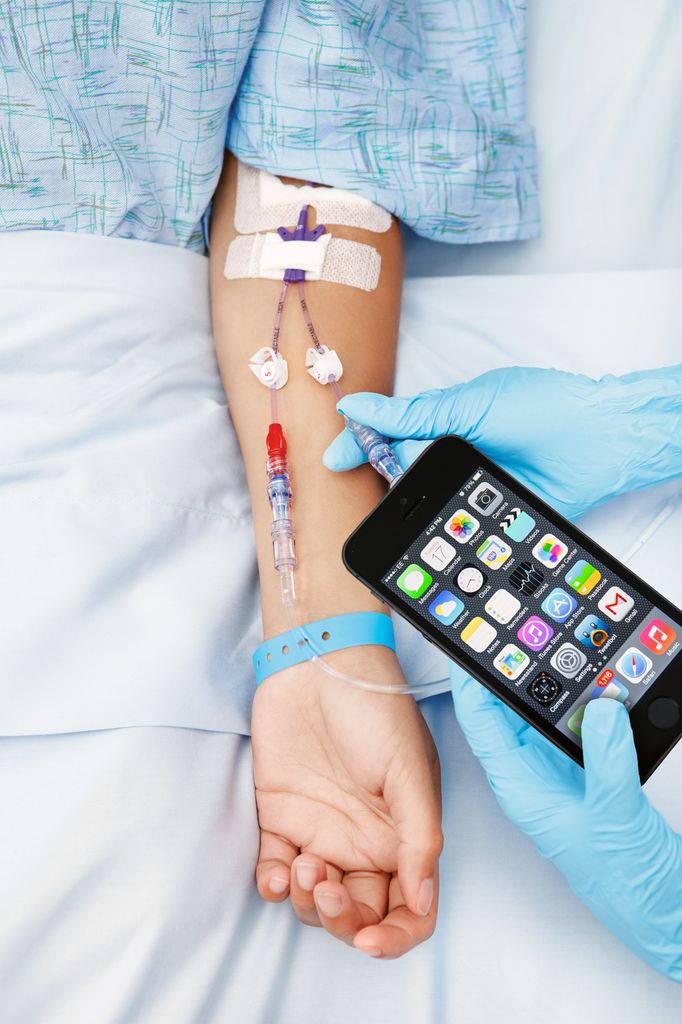 Have you ever searched for a ringing phone, feeling your anxiety increase with each ring? Or experienced a mini heart attack when you thought you lost your phone only to discover it was in a different pocket? Most older generations would criticize you for being so obsessed with technology, but recent studies have shown that ‘iPhone separation anxiety’ is a real disorder – and it is plaguing the younger generations of today’s society.
Have you ever searched for a ringing phone, feeling your anxiety increase with each ring? Or experienced a mini heart attack when you thought you lost your phone only to discover it was in a different pocket? Most older generations would criticize you for being so obsessed with technology, but recent studies have shown that ‘iPhone separation anxiety’ is a real disorder – and it is plaguing the younger generations of today’s society.
The average person spends about two hours and fifty-seven minutes on a smartphone or tablet every day. Most of us get stressed out if we misplace our phone, are constantly checking for notifications, and even feel ‘phantom vibrations’ – a sensation that we have received a notification when we really have not. Most people would dismiss this anxiety as an unhealthy obsession with technology, but research has shown that these feelings are legitimate and smartphone separation can have serious psychological and physiological effects.
Optogenetics: Using Light to Turn Memories On and Off

Scientists have known about rhodopsins that are responsible for sensing light for a while. What if there was a way to insert those rhodopsins inside neurons? That’s exactly what scientists were experimenting with in the early 2000s and it’s this idea that lead to the birth of optogenetics. By taking the DNA of channel rhodopsins from algae and inserting them into the membrane of neurons, scientists were able to make neurons sensitive to particular wavelengths of light. Channel rhodopsin and halorhodopsin are among the opins inserted into neurons by injecting viruses. Channel rhodopsin activates neurons while halorhodopsin silences them. Once the neuron expresses the light-gated cation channel channelrhodopsin-2 in its cells membrane, shining light on it for as little as a few milliseconds has a profound effect. It causes the opening of the channelrohodopsin-2 molecules, allowing positively charged ions to enter cell and cause the cell to fire.

Check out this video to see how optogenetics works.
Many experiments today use optogenetics to selectively turn neurons on and off in mice. What makes this method mind blowing is the high spatial and temporal resolution it gives scientists when working with the brain. It can be used on neurons in on a petri dish or within a living animal. It could be used to learn more about the function of particular brain regions. For instance, one could temporarily inactivate one region to observe how it impacts activity in other connected brain regions.
Furthermore, it’s minimally invasive: once the virus containing the rhodopsin has been injected, all the scientist needs to do is shine a pulse of light. Researchers at Stanford have used optogenetics to induce muscle contractions in mice. At Case Western Reserve University, researchers implemented it to restore motor function in rats paralyzed by spinal cord injuries. Could optogenetics be used to recover vision loss, something most humans deal with as they age? Experiments conducted on mice with a lack of photoreceptors shows that shining light on bipolar cells (containing channelrhodopsin-2) causes action potentials to fire in the visual cortex. It would be amazing if scientists could overcome biomedical and technical obstacles to make this work in humans too.
Across the river at MIT, members of the Tonegawa lab have taken the technique of optogenetics one step further. Steve Ramirez and Xu Liu have been working to localize memories in the brain and activate them with a light “switch”. And they have accomplished this feat in mice. Promising experiments with mice suggest optogenetics can be used to turn off traumatizing memories and activate pleasant once. This could have implications for PTSD, where horrific memories could be suppressed. They also have experimented with the idea of implanting false memories into the brain, which they call “Project Inception.” For more information on this work (and a good laugh), check out Steve Ramirez and Xu Liu’s TED talk.
Seems to me like optogenetics is a promising technique that can lead to breakthroughs in neuroscience.
-Srijesa K.
Sources
[1] “The Birth of Optogenetics” http://www.the-scientist.com/?articles.view/articleNo/30756/title/The-Birth-of-Optogenetics/
[2] “Potential Benefits of Optogenetics” http://optogenetics.weebly.com/what-is-it1.html
New Huntington’s disease clinical trial to enter Phase 1 in 2015
Huntington’s disease (HD) is a neurodegenerative disorder that slowly diminishes one’s ability to walk, talk, and reason until eventually control is completely lost. HD is an autosomal dominant genetic disorder, so everyone who carries the gene is guaranteed to develop the disease and will have a 50% chance of passing it on. Currently, there is no cure for this devastating disease, and most die within 10-20 years after onset.
With no treatment or way to stop the progression of HD, the outlook of those diagnosed has seemed pretty bleak. Until now. A new clinical trial for an HD drug is set to enter Phase 1 in 2015. This drug is meant to target the source of HD itself: the Huntington gene.

